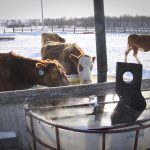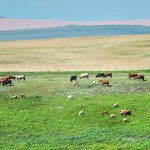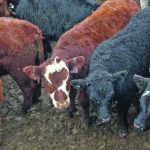Scientists try to find out if giving calves a probiotic before they enter the feedlot will prevent bovine respiratory disease
WINNIPEG — Over the last decade, scientists and doctors have established a connection between gut health and brain health. They’re realizing that the community of bacteria within the intestine can influence mood, cognition, behaviour and other things that are normally associated with the brain. “The gut-brain connection is complex and bi-directional,” says the Cleveland Clinic […] Read moreTag Archives Tim McAllister

Report gives beef sustainability high marks
CALGARY – A report tracking the Canadian beef industry’s progress on sustainability says the sector has reduced greenhouse gas emissions by 15 percent for each kilogram of boneless and consumed beef between 2014 and 2021. The second National Beef and Sustainability and Assessment and Strategy Report was released today by the Canadian Roundtable for Sustainable […] Read more

Quick test could improve treatment decisions in cattle
Researchers use water troughs to monitor resistant bacteria and help decide which antibiotics should be administered
Researchers are seeking ways to manage antimicrobial-resistant bacteria on farms, including quicker evaluation of bacteria so treatment can be better targeted. Agriculture Canada and University of Saskatchewan veterinary school researchers are studying feedlot water troughs, hoping the water can tell them what sort of anti-microbial resistant bacteria are present. “By knowing what type of resistance […] Read more
Grasslands seen as answer
From 1990 to 2019, greenhouse gas emissions from Canadian agriculture went from 58 million tonnes of carbon dioxide to about 69 million tonnes. That’s an increase of 19 percent. Tim McAllister, an Agriculture Canada scientist in Lethbridge, says the 19 percent jump is mostly about grassland that’s now being used to grow crops. “When you […] Read more




